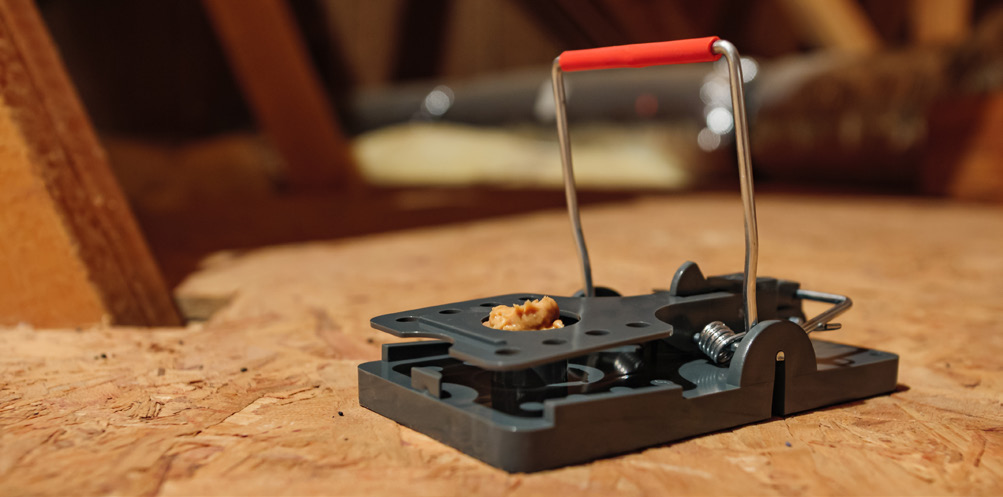Ask Steward: How can I control mice in my home?
Mice are troublesome houseguests. They find their way in through the smallest of holes and take up residence in warm and food-stocked homes throughout the year. With pets, young children, or concerns about odors or issues associated with rodenticides, rodent control options may feel limited. Here are solutions to controlling mice populations.
SANITATION AND PREVENTATIVE MEASURES
Mice can live in small spaces, move through holes or
openings as small as a quarter inch, and exist with little
food, so it is hard to rely only on sanitation and preventative strategies. However,
these strategies can help keep mice numbers low and reduce the chances of a rapidly
expanding population.
- Secure potential food sources like pet food, bird seed, and human foods in rodent-proof containers. Plastic bins with tight-fitting lids and metal, plastic or glass storage containers can reduce access for mice, who can chew through thin plastic or paper wrapping.
- Move items away from exterior walls and edges of the home to decrease hiding places, creating a “no-mice-land” two to three feet wide. Mice do not like to be exposed out in the open. Stacks of wood, cardboard, debris, plant materials, and ground litter can become nesting habitat sites and give access into the home.
- Stainless steel shredded scrubbing pads can plug difficult holes around pipes, vents, or other locations where mice enter. Block off as many holes as you can find around the exterior. Active entry points may have feces or other signs of mouse habitation.
TRAPS
Using traps with preventative methods can help remove mice that do make it inside. Consider using a high density of traps for significant mice infestations. Monitor and reset traps often.
- Snap-trap mouse traps are easily found in stores. The trigger pad should be large and have a sensitive hair-trigger. Traps can be set in cabinets or in rooms behind closed doors where pets and children cannot access them. Mice typically won’t travel further than 50 feet, so set traps in areas with signs of active mouse presence. Bait with peanut butter, chocolate, caramel, or sticky seeds. If the bait is continually taken off the trigger pad without setting off the trap, consider wrapping the bait with a light piece of gauze or fabric to hold it in place and set the trigger with a lighter touch. Mice often travel along walls, so set the trigger pad against a wall edge where they will cross it. Consider putting several traps near one another to capture several mice between monitoring. Check traps several times daily to remove dead mice and reset traps.
- Live traps capture multiple mice without being reset and do not need intense monitoring or resetting. Different traps have different configurations and baiting options. Consider your role in humanely removing and euthanizing captured mice in a timely manner.
Integrating several strategies increases success. Continue monitoring even after active trapping and removal phases; small populations are easier to mitigate than established populations.

Photo: Adobe Stock
Patrick Mangan is an MSU Extension Agent at the Flathead Reservation.
